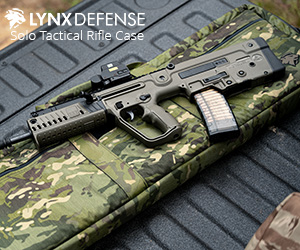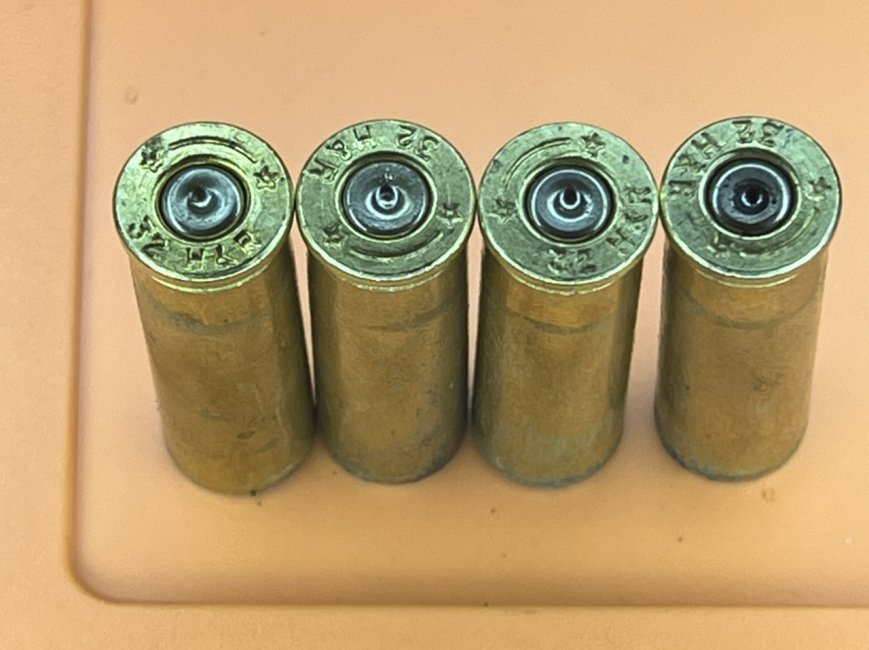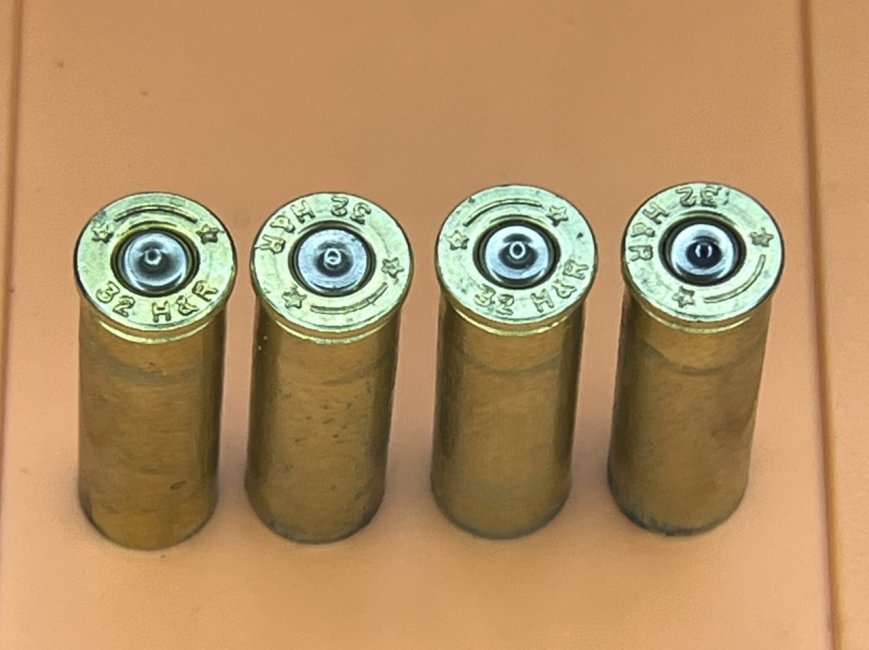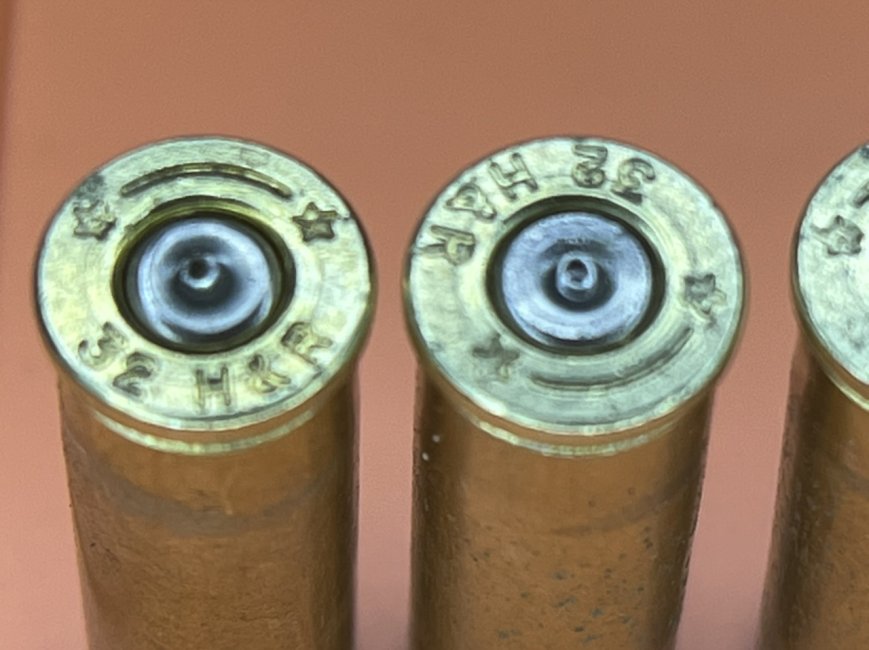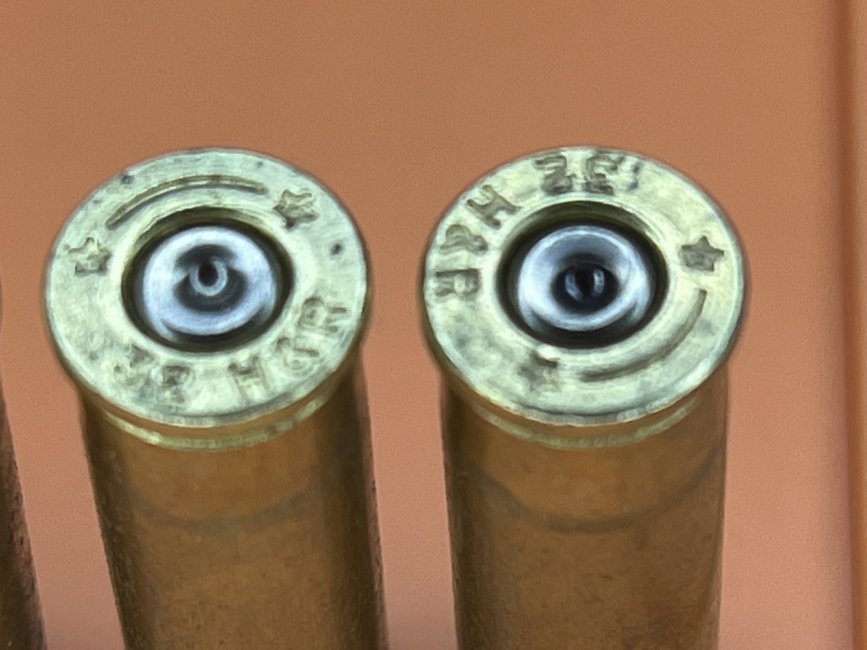IIRC keeping an eye on the primer condition after the shot shows sign of over-pressure if the primer appears flattened-out?
I’ve never flirted around near max load before, but I couldn’t find data for my exact combination so I’ve cautiously worked up toward max just to see where it is.
The brass looks completely fine but I’m seeing difference in the primer condition, just not the kind of difference I was expecting to see.
Revolver is S&W 331 AirLite Ti.
Caliber is 32H&R mag. Components are:
If it were you, would you try hotter loads or leave well enough alone?
May I ask you to look at the photos and comment with your wisdom please?
Photos left to right, all with moderate crimp:
Photo 2 shows all 4 brass, residue wiped.
Photo 3 shows cases 1 & 2 closer
Photo 4 shows cases 3 & 4 closer
I’ve never flirted around near max load before, but I couldn’t find data for my exact combination so I’ve cautiously worked up toward max just to see where it is.
The brass looks completely fine but I’m seeing difference in the primer condition, just not the kind of difference I was expecting to see.
Revolver is S&W 331 AirLite Ti.
Caliber is 32H&R mag. Components are:
- New Starline brass
- Winchester small pistol primers
- 115 grain lead semi-wadcutter
- TiteGroup powder
If it were you, would you try hotter loads or leave well enough alone?
May I ask you to look at the photos and comment with your wisdom please?
Photos left to right, all with moderate crimp:
- 3.0 grains powder
- 3.3 grains powder
- 3.5 grains powder
- 3.5 grains powder, bullet seated deep
Photo 2 shows all 4 brass, residue wiped.
Photo 3 shows cases 1 & 2 closer
Photo 4 shows cases 3 & 4 closer


